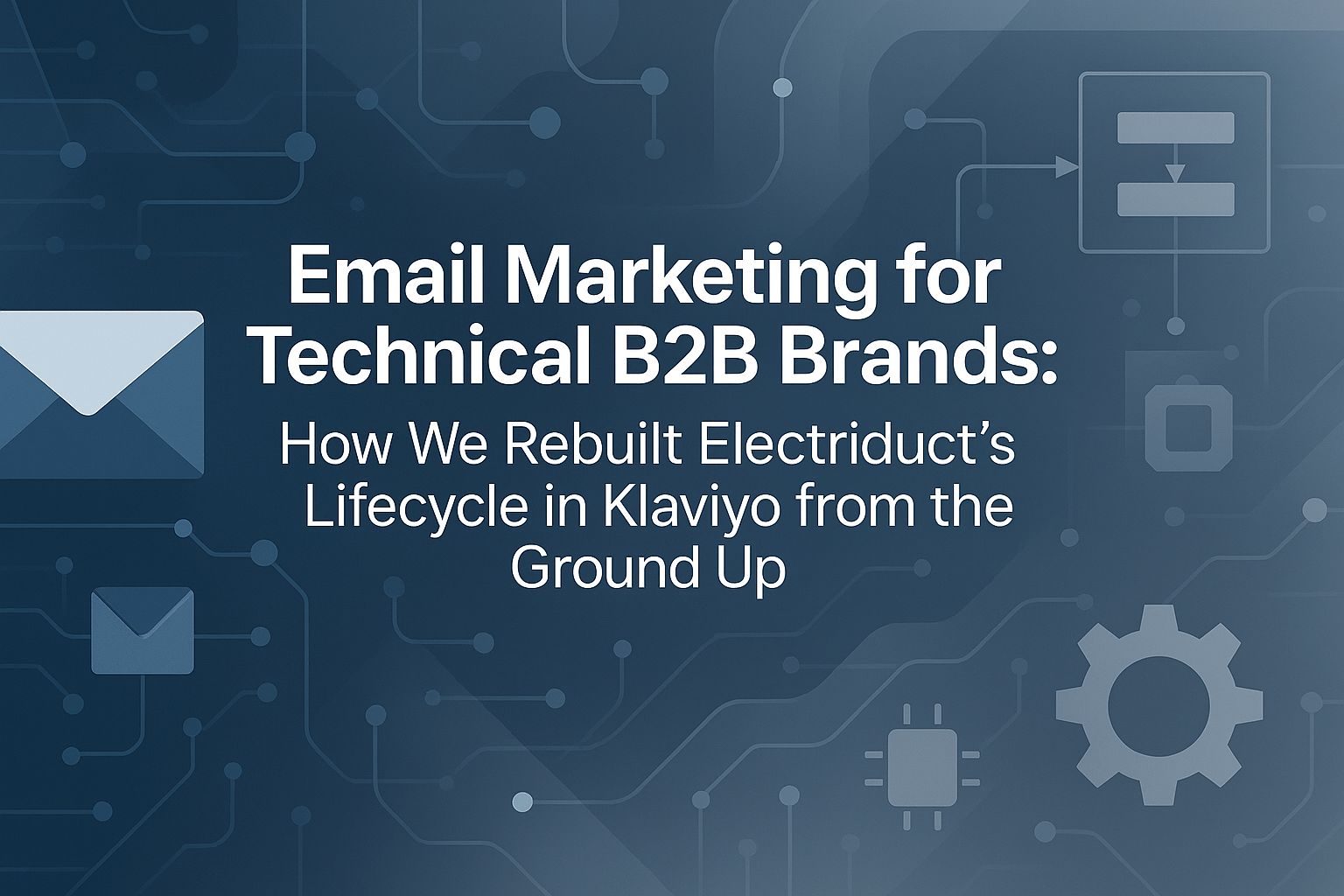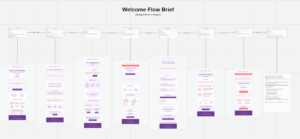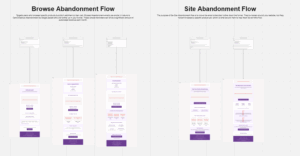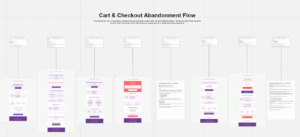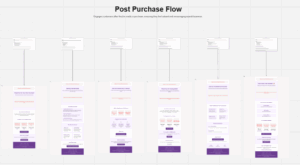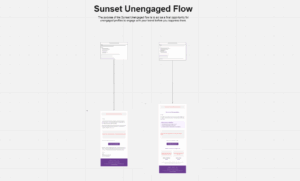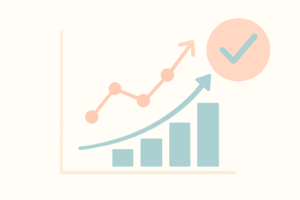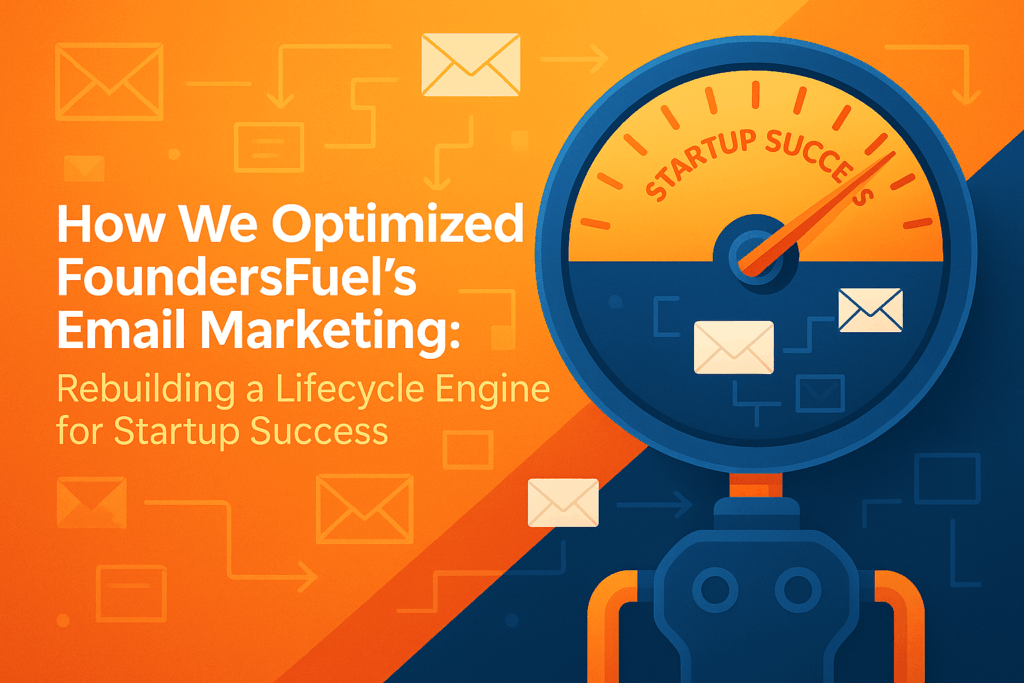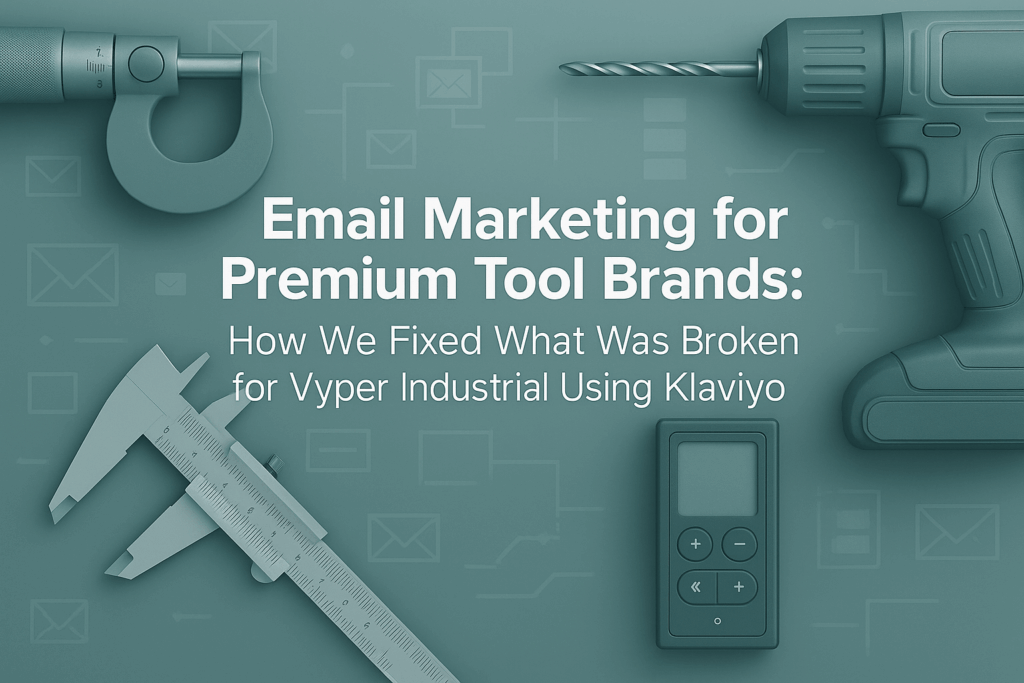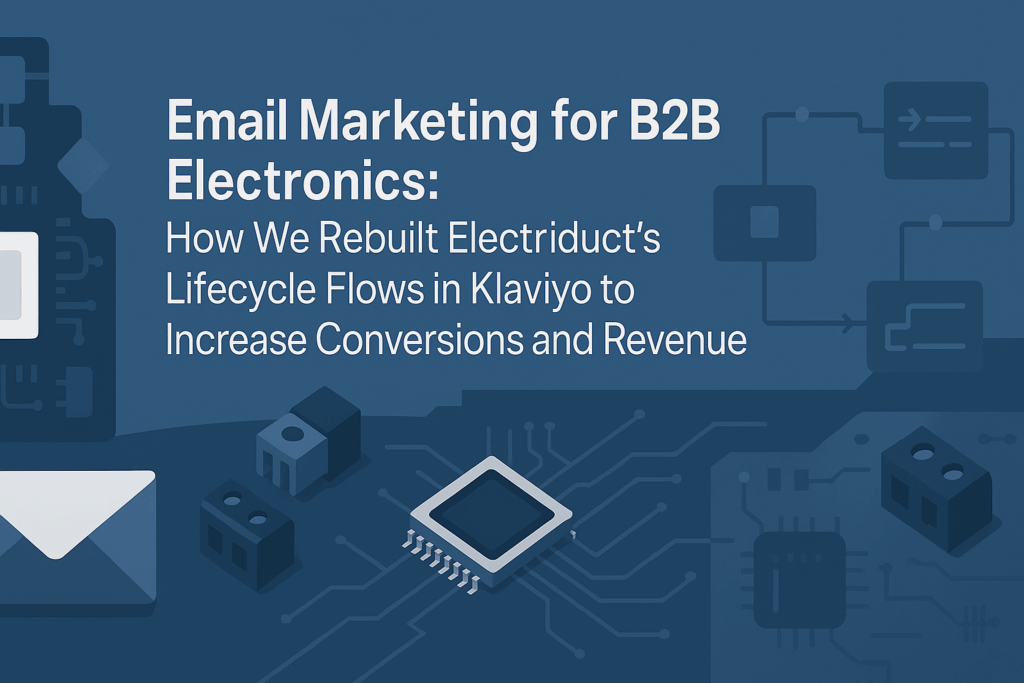Turning a Product-First Business Into a Lifecycle-First Brand
Electriduct is a quiet giant in the cable management industry. Their products show up where clean installs, high performance, and tight compliance matter most, whether it’s server racks humming in a telecom center, data cables running through a high-rise, or AV wiring tucked behind a drywall renovation. From Neat Patch systems to industrial-grade cable ties, they’ve built a catalog that earns trust through pure functionality.
But while their product lines were meticulously engineered, their email system was anything but.
It wasn’t that Electriduct wasn’t emailing. They were. A welcome email here, the occasional promotion there. But it was a patchwork, untargeted, flat, and inconsistent. The same generic message is sent to everyone, from contractors managing multi-phase builds to homeowners mounting wires under a desk. There was no journey. No segmentation. No rhythm. Just great products trapped in an underperforming system.
That’s where we stepped in.
Our job wasn’t to flood inboxes or force urgency. Our job was to build an email infrastructure that earned attention, respected the technical buyer’s mindset, and moved the right customers closer to action, whether they were browsing, buying, or re-evaluating. And we had to do it in a way that sounded and looked like Electriduct: clean, straightforward, and above all, reliable.
We designed seven core email flows and wrote 34 emails in total, each engineered to guide high-consideration B2B buyers from awareness to retention, without ever sounding like marketing.
This case study walks through how we rebuilt Electriduct’s email ecosystem from the ground up. One flow at a time. And why this framework matters if you sell to technical decision-makers who don’t click easily, but trust what works.
Welcome Flow Optimization: Building Trust From the First Click
Electriduct doesn’t sell impulse buys. Their audience is deliberate, IT pros, contractors, network engineers, people who weigh specs, check compatibility, and want assurance before they commit. That meant our welcome flow couldn’t rely on gimmicks or urgency. It had to earn trust one email at a time.
We designed an 8-email sequence that carefully introduced the brand, surfaced technical information, and layered in value, both tangible (like a discount) and intangible (like peace of mind). The goal wasn’t to rush a sale. It was to build confidence in the brand so that when a buyer was ready, they remembered who earned it.
1. Clear Value, No Gimmicks
The first email landed with sharp clarity. Clean branding. A crisp image of the Neat Patch system in use. And a headline that didn’t beat around the bush: “Professional Cable Management. Built to Last.”
No fluffy promises. Just what Electriduct does, why it matters, and what you get for signing up: 15% off your first order.
The call to action was just as focused: “Shop Top Solutions.” Not “Learn More.” Not “Explore Now.” Just decisive, brand-aligned direction.
This email wasn’t trying to sell the whole store. It was there to show up with purpose, state its value, and give the reader one confident path forward.
2. The Brand Behind the Products
Next, we pulled back the curtain. This email told the story of how Electriduct grew, from a small operation running on word-of-mouth into a national supplier trusted by industries like construction, telecom, and IT infrastructure.
But this wasn’t just a nostalgia play. We used real photos from the warehouse, snippets from early catalogs, and a direct quote from the founder. It grounded the brand in reality. Humanized it. And let the reader know that behind every product is a team that knows what field conditions really look like.
We closed with a soft bridge: “See what’s changed, and what hasn’t.” That link took readers to the bestsellers page. No pressure. Just curiosity.
3. A Technical Showcase Built for Scanners
Email three was all about technical users who don’t read copy, they scan specs.
We built a visual grid of Electriduct’s most popular product categories, Neat Patch, Cable Ties, Raceways. Each one came with an image, use case highlights, and core specs: UV ratings, load capacity, and installation type.
No salesy framing. Just practical, bite-sized information for people who know what they’re looking for.
4. The Soft Urgency Touch
Halfway through the flow, we reminded subscribers of their welcome offer, but with restraint.
Instead of flashing “Last Chance!” we anchored the 15% discount in the reality of first-time jobs. The message? “Let us make your first install easier.”
We embedded testimonial snippets to reinforce that tone: “Found everything in one order.” “Saved hours during a network cleanup.” And we introduced a visual countdown banner, not aggressive, just informative.
5. Side-by-Side with the Competition
This email brought out Electriduct’s technical edge, without bragging.
We built a simple, neutral chart comparing their products to common alternatives: durability, customization, temperature resistance, and lead time. Just the facts.
To back it up, we added customer-submitted install photos. Server racks. Retrofit jobs. Clean raceway layouts. The message was clear: These products don’t just promise, they deliver under pressure.
6. Voices from the Field
This wasn’t a wall of praise. It was proof.
Email six let the customers do the talking, network teams, AV installers, IT managers. Each testimonial was tight, to the point, and tied to a specific product.
“Held up through six months of Florida sun.” “Exactly what we needed for fire-rated walls.” “Labeled, mounted, and secured in under 20 minutes.”
We let the stories stand on their own, and invited the reader to find the one that matched their situation.
7. The Final Reminder
The last discount reminder had one job: make it easy to act.
No distractions. Just a headline, a countdown timer, and a recap of the top product bundles to use it on.
The final line said it best: “You’re not buying products. You’re choosing solutions.”
It reframed the decision, because that’s exactly how Electriduct’s audience thinks.
8. A Note From the Founder
We closed the sequence with a plain-text message from the founder.
No banners. No branding. Just a short thank you, a real anecdote about solving a cabling nightmare under deadline, and an open invite to reach out.
The subject line? “Tell us what you’re working on.”
That final shift, from system to person, invited connection. And in a product category where most emails feel like checklists, this one felt like a conversation.
Why This Flow Works
This flow doesn’t chase a sale. It earns it.
Each email builds on the one before. First comes clarity, then confidence, then credibility. By the time a discount appears, it doesn’t feel like a bribe; it feels like a token of appreciation.
And because every message speaks to a professional audience with precision, the entire sequence becomes more than marketing. It becomes part of the brand experience.
Abandonment Flows: Rebuilding Momentum Without the Hard Sell
Abandonment doesn’t mean disinterest. Especially not for Electriduct’s audience. It usually means the buyer is stuck in the middle of a process, pulling specs, waiting for approval, and comparing a few vendors. They’re still in the game. They just need a nudge that doesn’t insult their intelligence.
That’s why we split the strategy into two distinct flows: Site Abandonment and Browse Abandonment. Each one was calibrated for a different level of engagement, and each one respected the decision-making rhythm of technical buyers.
Site Abandonment Flow (2 Emails)
This track targets visitors who browsed the site but didn’t go deep. Maybe they were checking categories. Maybe they bounced before clicking on a product. Either way, we treated them as curious, not committed, and offered value without pressure.
1. Here’s What You Might’ve Missed
No “Did you forget something?” clichés here. We reframed the first email as a helpful follow-up:
“Exploring better cable management? Let’s make it easier.”
Then we delivered on that promise.
We included a downloadable Best Practices Guide segmented by use case, data centers, field work, and residential installs. Below that, we offered quick links to Electriduct’s top product categories, each with thumbnail specs: tensile strength, fire rating, and install type.
There was no overt CTA. Just an easy way to keep browsing with more context.
This email didn’t push. It supported.
2. What Solved It for Teams Like Yours
Three days later, we sent real-world stories, short, concrete examples of how other professionals found the answers they were looking for.
A school district is using Neat Patch to reduce maintenance time. A telecom crew that standardized raceways to save on installation costs.
Each story was no longer than 75 words. Challenge, solution, measurable result. The kind of quick-hit social proof that busy professionals can scan in seconds.
Browse Abandonment Flow (3 Emails)
This flow was for visitors who viewed specific products, like 14″ UV-rated cable ties or low-profile raceway kits, but didn’t add anything to their cart.
They were clearly evaluating. So we met them with specificity.
1. Looking at ? Here’s the Full Picture
This was a dynamic email. If a visitor viewed a product, we sent that exact product in the email, image, headline, specs.
Beneath it, we embedded a quick table comparing variants. For cable ties, that might be standard vs. UV-resistant vs. flame-retardant.
We didn’t hype anything. We just offered the facts: “Tested to 250°F. Rated for 1-year UV exposure. Available in black or natural.”
2. How It’s Used in the Field
This email brought the product into the real world.
We featured two usage examples, photos of installs, team quotes, and a short write-up on the conditions (temperature, mounting surface, application type).
No hard sell. Just real work being done by real people with the exact product the reader had considered.
We ended with: “Same gear. Same conditions. See if it fits your setup.”
3. Still Thinking? We Made It Easier to Say Yes
Our final touch was practical, not promotional.
We led with an accordion-style FAQ addressing common concerns about the product, compliance, compatibility, and environmental exposure.
Then we introduced a 72-hour free shipping offer. It wasn’t loud. It was just the next logical step: “We’ll cover delivery, so your team gets moving faster.”
Why This Flow Works
This isn’t about pressure. It’s about persistence with purpose.
Each abandonment flow respects the buyer’s stage of consideration. Site abandoners get clarity. Browsers get specificity. And neither is treated like a lead to “convert”, they’re treated like professionals gathering what they need to make the right call.
By the end of these flows, the buyer doesn’t just feel followed up on, they feel supported. And for a brand like Electriduct, that distinction makes all the difference.
Cart & Checkout Flow Optimization: Reducing Friction, Not Just Sending Reminders
In technical eCommerce, a cart left behind isn’t a sign of disinterest. It’s a signal. It means someone was interested enough to build a kit, but something got in the way.
Maybe they needed to loop in procurement. Maybe they were checking specs against a site plan. Maybe they just got pulled into another install and never came back.
That’s the kind of buyer Electriduct serves, people who take their time because the decisions they make have real-world consequences. So this flow wasn’t built to nudge or nag. It was built to make that decision easier, clearer, and more confident.
Eight emails. Each one is written for someone who doesn’t want a hard sell, just help crossing the finish line.
1. Still in Your Cart , Your Specs Are Waiting
This first email landed quietly, within 30 minutes of abandonment.
No panic. No pressure. Just: “Still working on your setup? No rush, your cart is saved.”
We included a clean product image, clear technical specs, and a direct link back to the cart. Then, below the fold, we added two calming signals: a 30-day return policy and a reminder that Electriduct’s US-based support team is standing by.
It’s the kind of message that says, “We’ve got your back, whenever you’re ready.”
2. Got Questions About That Product?
Next, we addressed the silence not with a pitch, but with answers.
We pulled in common questions customers ask about that specific item, flame ratings, material specs, compliance details, compatibility quirks, and structured them into a clean, collapsible FAQ.
No fluff. Just clarity.
This email didn’t push the purchase. It eliminated the unknowns that might be slowing it down.
3 .What Others in Your Field Say
A few days later, we let the buyers themselves do the talking.
We pulled testimonials from professionals in similar roles, network engineers, facilities leads, and field techs. People who had bought that same product and put it to the test.
We kept the quotes tight, the names credible, and the layout visual. This wasn’t vague praise. It was ground proof that the product holds up under pressure.
4. Complete the Setup
By day five, we shifted focus.
Instead of pushing the original item, we highlighted accessories that made the solution more complete, mounting clips, labeling kits, and modular upgrades.
Not upsells. Not noise. Just smart add-ons that showed Electriduct had thought through the entire workflow.
We keep it simple, no pinching, just to remind ourselves: “Need it all to ship together? Here’s how to make it seamless.”
5. On Us, Free Shipping for 48 Hours
Now came the incentive, but done the Electriduct way.
No bold red headlines. No exclamation points. Just a practical offer: free shipping for the next two days.
The logic was simple. For high-AOV buyers, convenience beats coupon codes. Getting everything delivered on time, in one shot, matters more than saving a few bucks.
This email made the case plainly: “We’ll cover delivery, so your team gets what it needs, faster.”
6. How We Stack Up
Still undecided? Then they were probably comparing options. So we made it easier.
We built a quiet, confident product comparison chart, Electriduct vs. a generic Amazon product, plus a name-brand competitor. No salesmanship. Just specs: load ratings, compliance, warranty, install time.
The subject line said it best: “The numbers speak for themselves.”
7. Last Call, Offer Ends Tonight
Day 10. If they still hadn’t moved, this was the final nudge.
But again, we didn’t make it loud. We made it easy.
One bold timer. One restated offer. One visual of the product still waiting in the cart.
Simply to keep the customer connection intact without pinching: “No pressure, just a final reminder in case you were waiting for the right time.”
8. One Last Thing, Anything Holding You Back?
The sequence ended with a plain-text email from a real person on the Electriduct team.
Short, honest, and empathetic.
“Still considering that gear? Totally understandable. If there’s anything we can help with, tech specs, installation questions, custom quotes, just hit reply.”
No CTA. No buttons. Just a real invitation to talk.
Because sometimes what seals the deal isn’t an offer. It’s a human touch.
Why This Flow Works
This isn’t a cart flow that begs or bribes. It’s one that assumes the buyer is thoughtful, technical, and capable. That’s why it works.
Every email earns trust by making the path forward clearer, not louder. Whether it’s offering specs, showing field-tested proof, or simply reminding them that the cart is still there, it respects the process. And for a buyer who’s probably juggling multiple projects and technical decisions at once, that makes all the difference.
Clarifying the Path: What Happens After Checkout Matters More Than You Think
Most brands think the sale is the finish line. For Electriduct, it’s just the start.
When a customer buys technical gear, Neat Patch panels, raceways, high-temp cable ties, they’re not just shopping. They’re solving something. Maybe they’re prepping a data center install. Maybe they’re managing compliance for a government facility. Whatever it is, they need the next steps to be clear, fast, and frictionless.
That’s why we treated post-purchase emails not as formality, but as part of the customer experience. This is where confidence is reinforced. This is where buyers become believers.
We broke the after-sale strategy into two flows: Post-Purchase (six emails) and Sunset (two emails). One builds trust. The other respects silence.
Post-Purchase Flow: Turning Buyers Into Long-Term Partners
The goal wasn’t to say “Thanks for your order.” It was to answer: “Now what?”
This 6-email sequence was designed to reduce uncertainty, support implementation, and extend value without overwhelming anyone.
1. Order Confirmed , Here’s What’s Next
Most confirmation emails are glorified receipts. This one went further.
Below the summary and shipping ETA, we included:
- Install prep tips
- Download links for spec sheets and manuals
- A visual checklist of what to do before gear arrives
So if someone bought raceways or Neat Patch, they’d see reminders like “Check mounting depth” or “Pre-label patch ports.” It helped customers feel like the install had already begun, in the best way possible.
2. En Route , Let’s Set You Up
When the order shipped, we didn’t just send a tracking link. We sent readiness tools.
Short setup videos, PDF diagrams, and best-practice guides, delivered at the perfect moment: while the product was in transit. That way, by the time it landed on site, they knew exactly what to do with it.
It turned idle shipping time into prep time. And for field teams with tight install windows, that matters.
3. Everything Good With Your Gear?
Three days after delivery, we checked in. Not with a “Leave a review!” nudge, but with a simple question:
“Did everything go smoothly?”
Below that, we added quick links to the help center, product FAQs, and direct access to a tech specialist, so they didn’t have to go hunting if something was off.
The goal? To show that Electriduct doesn’t just ship boxes. They show up when the tools hit the wall.
4. Share What You Know , Help the Next Pro
A week after delivery, we asked for a review. But we didn’t make it about us. We made it about helping the next installer.
The subject line said it all: “From one pro to another.”
Inside, we included a few optional prompts: “Was the install clean?” “How did the material hold up?” “What was the application?” These weren’t to extract praise, they were to surface real-world use cases that future buyers could learn from.
5. Complete the Setup
Two weeks in, we gently suggested a few smart add-ons.
If you bought patch panels, we showed you cable IDs and airflow kits. If you picked up raceways, we showed end caps and wall-mount tools. Every suggestion was tied to the gear you bought, and to a real use case.
No random upsells. Just thoughtful enhancements. Delivered like a tip from someone who’s done this before.
6. Welcome to the Loyalty Loop
Thirty days later, we introduced Electriduct Rewards.
But instead of hyping “points” or limited-time offers, we framed it as professional recognition:
“You made a smart choice. We’d like to thank you for that.”
We showed their current balance, how to redeem it, and how to earn more without needing a separate login or app. It felt seamless, like a quiet nod for being a smart buyer.
Why This Flow Works
Most post-purchase emails just confirm delivery and vanish.
This one stuck around to help.
It taught. It reassured. It extended the value of the original order. And, most importantly, it gave Electriduct’s buyers the feeling that someone on the other end understood what it’s like to be them, working fast, under pressure, with zero room for failure.
That’s what builds brand loyalty in technical markets, not giveaways, but support that shows up when it matters.
Winback Flow: Rebuilding Trust with Silence, Not Noise
By the time someone’s gone quiet for three to six months, most brands either forget they existed or start flooding their inbox with discounts. We don’t do either.
Electriduct’s Winback Flow was designed to treat silence not as rejection, but as a pause. A signal that something shifted: maybe their project wrapped up, maybe their needs changed, or maybe they just haven’t had a reason to come back.
So instead of pushing products, this five-part series starts with a listening posture, and ends with a door left wide open.
1. We Miss You, And Here’s What’s New
This isn’t one of those “Hey stranger!” emails. We know exactly who you are. We remember what you ordered. And we thought you might want to know what’s changed since.
The first winback note gently reintroduces Electriduct by showing you exactly where we’ve improved. Bought standard Cable Ties? Here’s our new UV-Resistant version, tougher and made for the outdoors. Picked up a Raceway Kit? We’ve upgraded the design for easier installs and cleaner finishes.
We don’t pitch, we inform. The layout splits your past purchase on one side and what’s new on the other. It’s not about “getting you back”, it’s about showing up with something worth your time.
2. We Know Your World, Let’s Talk Shop
The second email steps into your shoes.
If you’re in IT, we talk about clean cable architecture in live server rooms, real use cases, not jargon. If you’re in construction, we bring jobsite cable protection and on-the-ground safety into focus. Each version is tailored, sharp, and relevant, not with fluff, but with function.
We use imagery and terminology that signals, “We get it.” Because if you’re going to tune back in, we want you to know: we’ve been paying attention.
3. A Quiet Thank You, With a Nudge
By this point, we’ve earned the right to make an offer. So we do, but gently.
A 10% thank-you discount. No big banners. No ticking clocks. Just a short note of appreciation for your past business, with a modest incentive to make the next order easier.
What makes this email work isn’t the number, it’s the tone. We treat the reader like a returning client, not a lost lead. We recommend a few products that actually make sense based on what they’ve bought before. No shotgun approach. Just helpful curation.
4. What’s Broken, and How to Fix It
Sometimes the best way to bring someone back is to teach them something they didn’t know they needed.
This email does just that, less like a marketing message, more like a well-written field memo. We share common cable issues people run into (even pros), and how Electriduct solutions quietly solve them.
There’s a photo of a messy bundle under a desk… and then the after shot with seamless routing. A cracked cable guard on a jobsite… then our heavy-duty replacement, properly installed. It’s visual, instructional, and never condescending.
This isn’t about showing off, it’s about showing up with answers.
5. One Person, One Email
The final message doesn’t come from marketing. It comes from a real person, an account manager with a name, not a brand with a slogan.
There’s no banner. No graphics. No pitch.
Just a few thoughtful lines checking in. Maybe the customer moved on to a different vendor. Maybe they’ve paused their projects. We acknowledge that and invite them to tell us what changed. Sometimes that opens the door to feedback. Sometimes it opens the door to a new sale.
But either way, it ends with what matters most in a winback flow: respect.
Why This Flow Works
Electriduct isn’t a hype-driven brand. Our customers are pros, people who know what they want, and who don’t want their inbox wasted.
This flow wins people back by acting like we know them, not like we’re chasing them. It balances relevance with restraint, empathy with expertise. And most importantly, it re-establishes the connection without compromising trust.
It doesn’t scream. It speaks.
Sunset Flow: When Silence Deserves Respect
Sometimes people go quiet, not because they’re done with you, but because the timing’s off. Maybe the last job wrapped. Maybe they moved roles. Maybe their inbox just got crowded.
Most email systems treat that silence as a problem to solve. More discounts. More reminders. More noise.
We took a different approach.
The Sunset Flow wasn’t built to chase. It was built to listen.
Two simple emails. No theatrics. Just one last check-in, and then the courtesy of a quiet exit, unless they chose otherwise.
1. Still With Us?
This email didn’t pretend we were still top of mind. It acknowledged the reality.
“Looks like it’s been a while since we connected. Totally fair. If we’re no longer helpful, we won’t take it personally.”
Right below that, we offered a simple update form with a few checkboxes:
- Product Updates
- Educational Tips
- Limited-Time Offers
Let the subscriber decide what’s worth hearing. No pressure. No guessing.
The tone was casual, honest, and deeply respectful of people’s time.
2. Last Email, Unless You Say Otherwise
Ten days later, we sent one final message. Not a reactivation campaign. Not a dramatic goodbye.
Just this:
“Unless we hear from you, we’ll stop emailing after this. No hard feelings. Thanks for being part of the journey.”
We included a short highlight reel: what they’d been missing (new product categories, best practices, install stories from the field), and a quiet “come back anytime” offer, like free shipping on their next order.
Why This Flow Works
Because silence isn’t always disinterest. Sometimes it’s just bandwidth.
This flow treats lapsed engagement the same way a good account manager would: by checking in once, offering value, and then stepping back respectfully.
That builds trust, even when someone’s not ready to buy. And if they do re-engage later, it’s not because we pushed. It’s because we earned the right to stay in the room.
Strategy & Implementation: Turning a Vision into a Lifecycle System
What we built for Electriduct wasn’t just a new set of emails, it was an operational backbone. A connected lifecycle system that reflects how real buyers make decisions, how professionals evaluate solutions, and how teams trust brands over time.
We weren’t here to be clever. We were here to engineer confidence, email by email, flow by flow.
And that starts with how we built the system from the ground up.
A Customer Journey That Mirrors Real Behavior
We began with a whiteboard and a blank slate. Not a template. Not a funnel. A genuine question: “How do different customers actually move through this buying process?”
The answer? It’s not linear. A contractor on a job site doesn’t think the same way an IT procurement lead does. A residential DIYer might act fast. A facilities manager? More deliberative.
So we mapped journeys that accounted for:
- Intent (browsing casually vs. planning a critical install)
- Role (field tech, operations lead, admin buyer)
- Product type (high-AOV vs. low-friction reorder)
- Time-to-decision (minutes, days, or weeks)
Then we designed seven core flows that could respond to those variables, handing off between them based on behavior, not assumptions.
We built logic that says: “If they click this, show them that. If they don’t open, shift tone. If they browse again, reintroduce.” It wasn’t just segmentation. It was choreography.
Content That Speaks Like a Professional
This audience doesn’t want marketing language. They want clarity. So we designed a content system with one job: to remove friction from every micro-moment.
Every email followed three editorial rules:
- Function before flair.
Every sentence had to earn its place. If it didn’t explain, reassure, or clarify, it didn’t belong. - Professional empathy.
We anticipated the real-life context: approvals delayed by procurement, installs scheduled around other vendors, confusion about compatibility. We wrote like we understood the job site. - Language with edge-of-the-seat precision.
Specs were correct. Use cases were realistic. Testimonials were vetted. When a contractor reads “250 lbs tensile strength, ” they trust it because it’s not marketing copy, it’s fact.
Visually, we kept the designs clean and action-ready. Typography that worked on mobile. CTAs that stood out without shouting. Space to breathe. Space to think.
This wasn’t just brand consistency. It was operational respect.
A Klaviyo System Built for Scale
We implemented the full infrastructure in Klaviyo, but we didn’t treat it like an email tool. We treated it like a revenue system.
Everything was modular. Everything was future-proofed.
- Dynamic content blocks meant a single testimonial update populated across flows.
- Segmentation was tied to actual on-site behavior, not just email opens.
- Time delays were customized based on B2B buying velocity.
- Product data was mapped to personalize follow-ups down to the SKU level.
And we didn’t stop at launch.
We built a custom analytics dashboard that tracked:
- Flow attribution: Which email actually drove the order?
- Time-to-purchase: How long from first touch to checkout?
- Drop-off rates: Where did attention vanish?
- Subject line impact: What earned the open in technical vs. non-technical audiences?
The Electriduct team didn’t just get better visibility, they got decision-grade data.
Empowering the Internal Team to Own the Machine
We didn’t vanish after deployment. We made sure Electriduct’s team could run, and optimize, this system without us.
We delivered:
- A full lifecycle architecture map (think: email GPS)
- Trigger rules, fallback logic, and re-entry paths
- Brand voice and tone guide for future emails
- A/B testing roadmap: what to test next, and why
- Training workshops: two live sessions with their marketing ops team
This wasn’t an agency handoff. It was a playbook handoff. One designed to give them total ownership of the engine we built together.
Expected Results & Final Takeaways: From Email Sequences to Scalable Infrastructure
What we implemented for Electriduct wasn’t just a refresh of email templates, it was a structural overhaul. Every decision, from copy tone to Klaviyo branching logic, was built to compound. Each flow was architected to move a buyer one step further, from awareness to consideration, from transaction to loyalty.
Now, Electriduct doesn’t just have more emails, they have infrastructure.
Projected Results: What This System Was Built to Deliver
Here’s what Electriduct can expect based on performance benchmarks, real-world results from similar implementations, and the early traction we’ve already seen:
- Welcome Flow Conversion Rate: 12–15% of new subscribers convert to paying customers.
- Browse Abandonment Return Rate: 8–10% of abandoners return and complete a purchase.
- Cart Recovery Rate: Up to 20%, roughly a 4x improvement over the prior system.
- Post-Purchase Attachment Rate: 15–25% of customers purchase complementary products within 30 days.
- Winback Reactivation Rate: 10–15% of dormant leads return and re-engage.
- Overall Email-Attributed Revenue: 35–45% increase in attributed revenue, with a higher AOV.
- Customer LTV: Projected lift of 25–30% over a 6–12 month window due to higher retention and repeat order volume.
These aren’t speculative guesses. They’re backed by structured behavioral systems, sharp targeting, and human-centered lifecycle logic. And in technical B2B verticals, those compound advantages are hard to replicate with one-off campaigns or one-size-fits-all tools.
What Electriduct Has Now
Before, Electriduct had a solid product line, loyal buyers, and dependable search traffic. But they lacked one critical thing: a real communication system.
Now they’ve got it.
Here’s what’s changed:
-
A full lifecycle system—from first touch to win-back—with no dead zones.
-
Flows written for engineers and professionals, not bargain hunters.
-
Automation that feels personal, not robotic.
-
A structure that can scale with new products, new verticals, and new buyer types.
-
Visibility into what’s working: attribution, drop-off points, re-engagement metrics—all trackable.
And most importantly: it runs on its own. Whether the marketing team is at their desk or not, this system keeps working—predictably, responsively, and at scale.
Contact us and we can help you do it.



